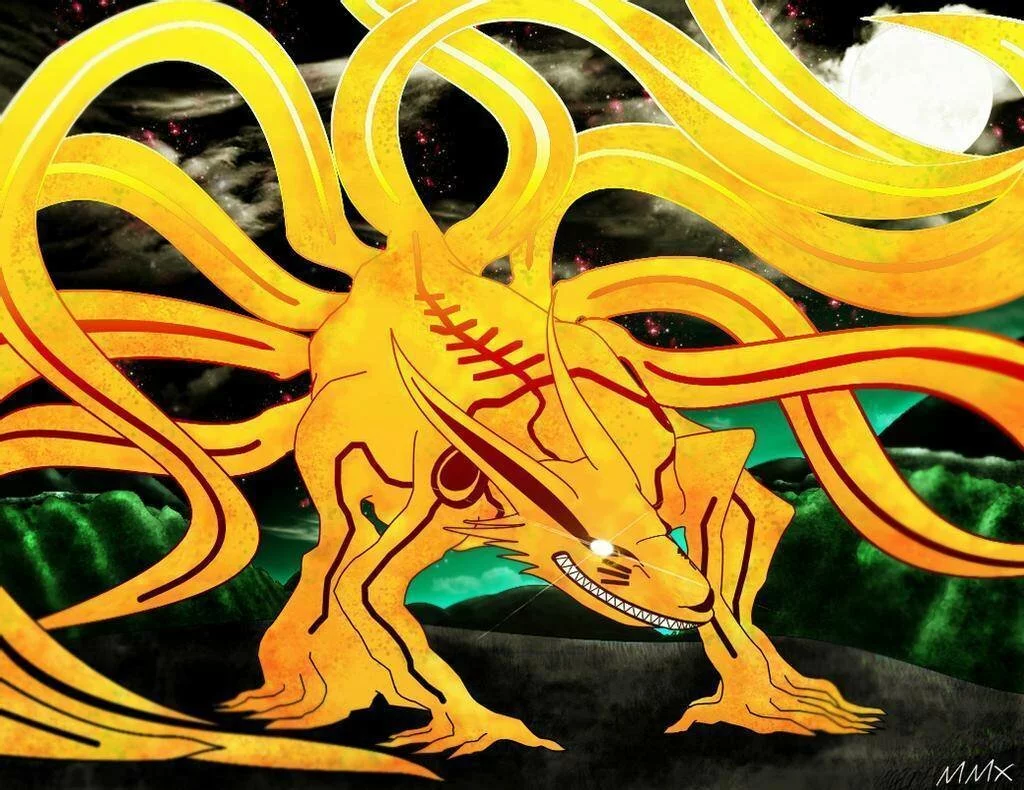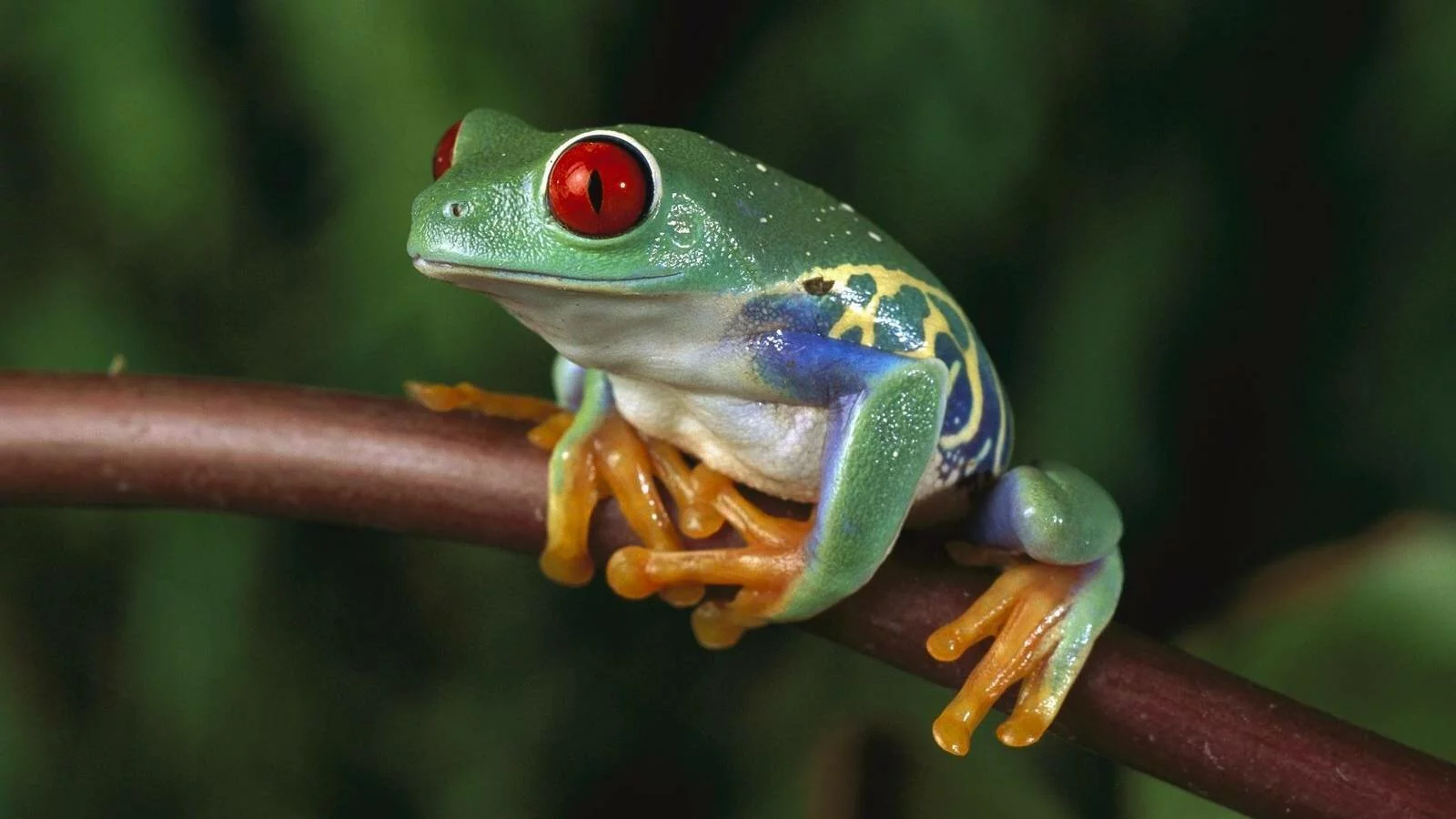Descripción
Comparación del tamaño de Chindesaurus y un humano
Chindesaurus es conocido por cinco especímenes incompletos, seis si se incluye Caseosaurus. De estos, el tipo PEFO 10395 es el más completo, que consta de un solo diente, una vértebra fragmentaria del cuello, vértebras fragmentaria del lomo, varios fragmentos de costillas, dos vértebras completas de las caderas, vértebras caudales fragmentarias, un cheurón , varios huesos de la cadera fragmentarios, un fémur izquierdo completo y un fémur derecho fragmentario, una tibia derecha fragmentaria y un hueso del tobillo derecho. Las otras muestras son más incompletas y consisten en huesos de cadera aislados, huesos de la parte superior de la pierna, fémur,) y más vértebras. Los especímenes de tipo y paratipo tenían aproximadamente 2 a 2,3 metros de longitud. Algunas estimaciones sugieren que Chindesaurus pesaba 50 kilogramos como máximo. El miembro del Parque Nacional del Bosque Petrificado Superior de la Formación Chinle donde fue encontrado Chindesaurus era una antigua llanura aluvial donde vivían fitosaurios, rauisúquidos, arcosaurios, pseudosuquios y otros tetrápodos y competían por los recursos con el dinosaurio Chindesaurus y su pariente Coelophysis. Este paleoambiente también tenía abundantes peces pulmonados y almejas.
Description[edit]
The size of Chindesaurus (interpreted as a herrerasaurid) compared to a human
The type and paratype specimens were approximately 2 to 2.3 metres (6.6 to 7.5 ft) in length. Some estimates suggest that Chindesaurus weighed 50 kilograms (110.2 pounds) at most.
Distinguishing anatomical featuresedit
A diagnosis is a statement of the anatomical features of an organism (or group) that collectively distinguish it from all other organisms. Some, but not all, of the features in a diagnosis are also autapomorphies. An autapomorphy is a distinctive anatomical feature that is unique to a given organism or group.
According to Nesbitt et al. (2007), Chindesaurus can be distinguished based on the following characteristics:
- a triangular rugosity is present on the postacetabular process
- the proximal tibial intercondylar groove is strongly situated medially
- the posterior edge of the fibular condyle of the proximal tibia is straight when examined in proximal view
- the presence of a ventral cleft on the astragalus
References
- ^ Long and Murry, (1995). «Late Triassic (Carnian and Norian) tetrapods from the Southwestern United States.» New Mexico Museum Natural History Science Bulletin, 4: 1-254.
- ^ Bittencourt and Kellner, (2004). «The phylogenetic position of Staurikosaurus pricei Colbert, 1970 from the Triassic of Brazil.» Journal of Vertebrate Paleontology, 24(3):.
- ^
- ^
- Litwin, R.J., Traverse, A., and Ash, S.R., 1991. Preliminary palynological zonation of the Chinle Formation, southwestern U.S.A., and its correlation to the Newark Supergroup (eastern U.S.A.). Review of Paleobotany and Palynology, v. 77, p. 269-287.
- ^ Nesbitt, Irmis and Parker, (2007). «A critical re-evaluation of the Late Triassic dinosaur taxa of North America.» Journal of Systematic Palaeontology, 5(2): 209–243.
- Liddell, Henry George & Robert Scott (1980). A Greek-English Lexicon (Abridged Edition). United Kingdom: Oxford University Press. ISBN 978-0-19-910207-5.
- ^ Benson, R.B.J. & Brussatte, S. (2012). Prehistoric Life. London: Dorling Kindersley. p. 217. ISBN 978-0-7566-9910-9.
- Meyer, (1986). «D-Day on the Painted Desert.» Arizona Highways, 62(7): 3-13.
- Rauhut, 2003. The interrelationship and evolution of basal theropod dinosaurs. Special Papers in Palaeontology. 69, 1-215.
- Hunt, Lucas, Heckert, Sullivan and Lockley, (1998). «Late Triassic Dinosaurs from the Western United States.» Geobios, 31(4): 511-531.
- Langer, (2004). «Basal Saurischia.» In Weishampel, Dodson and Osmolska (eds.). The Dinosauria Second Edition. University of California Press. 861 pp.
Classification
Restoration as a theropod, from Petrified Forest National Park
Chindesaurus has been difficult to classify, and has been recovered in several different positions at the base of the saurischian family tree. When it was first discovered in 1984, the fossil specimen which would eventually be named Chindesaurus was thought to be a prosauropod. When it was finally described and named a decade after its discovery by Long and Murry, they regarded it as a herrerasaurid, an opinion that has been followed by most paleontologists since. Most phylogenetic analyses published through 2007 continued to find it to fall among the herrerasaurids, though a few studies cast doubt on this, including one in 2007 by Irmis, Nesbitt and colleagues which found Chindesaurus to be a probable basal saurischian dinosaur, and noted that it shares a wide range of characteristics with several lineages of basal saurischians, making any classification problematic. Rauhut (2003) noted that the medially expanded of Chindesaurus resembles that of crurotarsans, and not that of most dinosaurs, which is usually laterally expanded. Benson and Brussatte (2012) found that Chindesaurus was a basal saurischian related to Herrerasaurus.
One specimen originally assigned to Chindesaurus, from the Tecovas Formation of Texas, was later placed in its own genus and species, Caseosaurus crosbyensis. Subsequent research has shown that this separation was probably in error, and that the two forms represent the same species. Nesbitt, Irmis and Parker agreed in a 2007 paper that there is little reason to separate Caseosaurus from Chindesaurus, and the two even share some unique characteristics not found in similar species. Nesbitt and colleagues suggested that any differences between the two were probably related to differences in size. However, since both species are so fragmentary, they decided not to formally make them synonyms.
The following is a cladogram based on the phylogenetic analysis by Hans-Dieter Sues, Sterling J. Nesbitt, David S Berman and Amy C. Henrici, in 2011, which indicated that Chindesaurus is a herrerasaurid. A similar position for Chindesaurus was recovered by the analyses by Baron, Norman & Barrett and Baron & Williams.
| Dinosauria |
|
||||||||||||||||||||||||||||||||||||||||||||||||
In 2019, the holotype specimen of Chindesaurus was redescribed by Adam D. Marsh, William G. Parker, Max C. Langer, and Sterling J. Nesbitt. They included a phylogenetic analysis which placed Chindesaurus as a basal theropod. It was specifically found to be the sister taxon of Tawa hallae, a theropod known from Ghost Ranch in New Mexico.
Clasificación
En 1984, cuando fue encontrado, los primeros informes de la prensa lo reconocieron como un prosaurópodo y el dinosaurio más temprano, pero nada de eso resultó ser cierto. Este depredador es posiblemente intermedio entre Staurikosaurus y Herrerasaurus, y se lo coloca generalmente con los herrerasáuridos, pero realmente no se conoce por un material particularmente bueno. El Ch. bryansmalli es considerado un terópodo triásico dentro de Herrerasauridae, hermano de Staurikosaurus, pero Bittencourt y Kellner lo apartan de este en su análisis filogenético del Staurikosaurus. Rauhut encontró difícil asignar Chindesaurus a una taxón menos inclusivo que Dinosauriformes, aunque él opina como Langer en que las dorsales están acortadas menos que en los herrerasáuridos y que poseen similitudes mayores con los crurotarsianos más que con los dinosaurios. Yates incluye Chindesaurus en un análisis filogenético de sauropodomorfos y lo coloca como un terópodo más cercano a Avepoda que Guaibasaurus o Agnosphitys, que siguen en forma tentativa allí. En 2007 Nesbitt, S.J., Irmis, R.B. y Parker, W.G. lo colocaron como probablemente un dinosaurio saurisquio básico. Según ellos actualmente, las afinidades de Chindesaurus no se pueden verificar debido a la gran semejanza de las partes preservadas con Saturnalia y la ausencia de gran parte del esqueleto. Irmis et al. colocan a Chindesaurus dentro de Herreerasauridae en su análisis de 2007, aunque tienen una pequeña muestra de la taxonomía.
Un espécimen originalmente asignado a Chindesaurus, de la formación Tecovas de Texas, fue más tarde situado en su propio género y especie, Caseosaurus crosbyensis. Investigación posterior ha mostrado que esta separación fue probablemente un error, y que las dos formas representarían la misma especie. Nesbitt, Irmis y Parker estuvieron de acuerdo en un artículo de 2007 que había pocas razones para separar a Caseosaurus de Chindesaurus, y los dos incluso compartían características únicas no halladas en especies similares. Nesbitt y colegas sugirieron que cualquier diferencia entre los dos estaba probablemente relacionada a diferencias en el tamaño. Sin embargo, dado que ambas especies son tan fragmentarias, ellos decidieron no hacerlos sinónimos formalmente.
Filogenia
El siguiente es un cladograma basado en el análisis filogenético de Hans-Dieter Sues, Sterling J. Nesbitt, David S Berman y Amy C. Henrici, en 2011, que indicó que Chindesaurus es un terópodo herrerasáurido. Una posición similar para Chindesaurus fue recuperada por los análisis de Baron, Norman & Barrett de 2017.
| Dinosauria |
|
||||||||||||||||||||||||||||||||||||||||||||||||
Description
The size of Chindesaurus (interpreted as a herrerasaurid) compared to a human
The type and paratype specimens were approximately 2 to 2.3 metres (6.6 to 7.5 ft) in length. Some estimates suggest that Chindesaurus weighed 50 kilograms (110.2 pounds) at most.
Distinguishing anatomical features
A diagnosis is a statement of the anatomical features of an organism (or group) that collectively distinguish it from all other organisms. Some, but not all, of the features in a diagnosis are also autapomorphies. An autapomorphy is a distinctive anatomical feature that is unique to a given organism or group.
According to Nesbitt et al. (2007), Chindesaurus can be distinguished based on the following characteristics:
- a triangular rugosity is present on the postacetabular process
- the proximal tibial intercondylar groove is strongly situated medially
- the posterior edge of the fibular condyle of the proximal tibia is straight when examined in proximal view
- the presence of a ventral cleft on the astragalus
Referencias
- ↑ Long and Murry, 1995. Late Triassic (Carnian and Norian) tetrapods from the Southwestern Unites States. New Mexico Museum Nat. History Sci. Bull. 4, 1-254.
- Benson, R.B.J. & Brussatte, S. (2012). Prehistoric Life. London: Dorling Kindersley. p. 217. ISBN 978-0-7566-9910-9.
- Liddell, Henry George & Robert Scott (1980). A Greek-English Lexicon (Abridged Edition). United Kingdom: Oxford University Press. ISBN 0-19-910207-4.
- Litwin, R.J., Traverse, A., and Ash, S.R., 1991. Preliminary palynological zonation of the Chinle Formation, southwestern U.S.A., and its correlation to the Newark Supergroup (eastern U.S.A.). Review of Paleobotany and Palynology, v. 77, p. 269-287.
- Meyer, 1986. D-Day on the Painted Desert. Arizona Highways. 62(7), 3-13
- Hunt, 1996. A new clade of herrerasaur-like theropods from the Late Triassic of western North America. Journal of Vertebrate Paleontology 16(3), 43A.
- Novas, 1997. Herrerasauridae. pp. 303–311. in Currie and Padian (eds). Encyclopedia of Dinosaurs. Academic Press, San Diego.
- Hunt, Lucas, Heckert, Sullivan and Lockley, 1998. Late Triassic Dinosaurs from the Western United States. Geobios. 31(4), 511-531.
- Sereno, 1999. The evolution of dinosaurs. Science. 284, 2137-2147.
- Bittencourt and Kellner, 2004. The phylogenetic position of Staurikosaurus pricei Colbert, 1970 from the Triassic of Brazil. Journal of Vertebrate Paleontology. 24(3).
- Rauhut, 2003. The interrelationship and evolution of basal theropod dinosaurs. Special Papers in Palaeontology. 69, 1-215.
- Yates, 2006. Solving a dinosaurian puzzle: the identity of Aliwalia rex Galton. Historical Biology. 2006, 1-31.
- Nesbitt, Irmis and Parker, 2007. A critical re-evaluation of the Late Triassic dinosaur taxa of North America. Journal of Systematic Palaeontology. 5(2), 209–243
- Hunt, Lucas, Heckert, Sullivan and Lockley, (1998). «Late Triassic Dinosaurs from the Western United States.» Geobios, 31(4): 511-531.
- Langer, (2004). «Basal Saurischia.» In Weishampel, Dodson and Osmolska (eds.). The Dinosauria Second Edition. University of California Press. 861 pp.
- Nesbitt, Irmis and Parker, (2007). «A critical re-evaluation of the Late Triassic dinosaur taxa of North America.» Journal of Systematic Palaeontology, 5(2): 209–243.
References[]
- ^ Long and Murry, (1995). «Late Triassic (Carnian and Norian) tetrapods from the Southwestern United States.» New Mexico Museum Natural History Science Bulletin, 4: 1-254.
- ^ Bittencourt and Kellner, (2004). «The phylogenetic position of Staurikosaurus pricei Colbert, 1970 from the Triassic of Brazil.» Journal of Vertebrate Paleontology, 24(3):.
- ^
- ^
- Litwin, R.J., Traverse, A., and Ash, S.R., 1991. Preliminary palynological zonation of the Chinle Formation, southwestern U.S.A., and its correlation to the Newark Supergroup (eastern U.S.A.). Review of Paleobotany and Palynology, v. 77, p. 269-287.
- ^ Nesbitt, Irmis and Parker, (2007). «A critical re-evaluation of the Late Triassic dinosaur taxa of North America.» Journal of Systematic Palaeontology, 5(2): 209–243.
- Liddell, Henry George & Robert Scott (1980). A Greek-English Lexicon (Abridged Edition). United Kingdom: Oxford University Press. ISBN 978-0-19-910207-5.
- ^ Benson, R.B.J. & Brussatte, S. (2012). Prehistoric Life. London: Dorling Kindersley. p. 217. ISBN 978-0-7566-9910-9.
- Meyer, (1986). «D-Day on the Painted Desert.» Arizona Highways, 62(7): 3-13.
- Rauhut, 2003. The interrelationship and evolution of basal theropod dinosaurs. Special Papers in Palaeontology. 69, 1-215.
- Hunt, Lucas, Heckert, Sullivan and Lockley, (1998). «Late Triassic Dinosaurs from the Western United States.» Geobios, 31(4): 511-531.
- Langer, (2004). «Basal Saurischia.» In Weishampel, Dodson and Osmolska (eds.). The Dinosauria Second Edition. University of California Press. 861 pp.
Discovery
Chindesaurus is known from six incomplete specimens (seven if Caseosaurus is included). Of these, the type specimen PEFO 10395 is the most complete. This was a partial skeleton, discovered in the Petrified Forest National Park member of the Chinle Formation in Apache County, Arizona. Its remains were discovered by Bryan Small in 1984, in blue mudstone which was deposited during the Norian stage of the Triassic, approximately 228-208 million years ago. It consists of a single tooth, a fragmentary cervical (neck) vertebra, fragmentary dorsal (back) vertebrae, several rib fragments, two complete sacral (hip) vertebrae, fragmentary caudal (tail) vertebrae, a chevron, several fragmentary hip bones, a complete left femur and a fragmentary right femur, a fragmentary right tibia, and a right astragalus bone of the ankle.
Several more incomplete specimens have been referred to the genus. Specimen PEFO 4849 consists of a single dorsal vertebra collected in Norian-aged sediments in a different part of the Upper Petrified Forest member. Specimen PEFO 33982, which consists of nine vertebrae, an ilium fragment, a proximal femur, and other bone fragments was also collected in Norian-aged sediments of Upper Petrified Forest member. These two specimens are housed in the collection of the University of California Museum of Paleontology in Berkeley, California.
Specimens NMMNH P16656 and NMMNH P17325 were discovered in the Bull Canyon Formation of New Mexico, sediments deposited during the Norian stage of the Late Triassic. The assignment of these two specimens to Chindesaurus has now come under question. These specimens are housed in the collection of the New Mexico Museum of Natural History and Science in Albuquerque, New Mexico.
Additional material referable to Chindesaurus was discovered in 2006, in gray/green siltstone at the Hayden Quarry of the Petrified Forest Member of the Chinle Formation in New Mexico. Another specimen, TMM 31100-523 which consists of a proximal femur, was discovered in the Colorado City Formation in Texas, in mudstone considered to be from the Carnian stage of the Triassic, approximately 235-228 million years ago. It is currently housed in the collection of the Texas Memorial Museum in Austin, Texas.
The genus name Chindesaurus is derived from the Navajo word chindi meaning «ghost» or «evil spirit» and the Greek word «sauros» (σαυρος) meaning «lizard»; thus, «ghost lizard» or «Lizard from Chinde Point». The specific name, bryansmalli, honors the discoverer, Bryan Small. Chindesaurus was described and named by R.A. Long and P.A. Murry in ; the type species is Chindesaurus bryansmalli. When this specimen was first discovered it was nicknamed «Gertie» after Gertie the Dinosaur and received much publicity.
Палеоэкология
Происхождение и возникновение
Экземпляр голотипа Chindesaurus PEFO 10395 — частичный скелет, обнаруженный в Ископаемом Лесном участнике Национального парка Формирования Чайнля в округе Апаче, Аризона. Остается, были обнаружены Брайаном Смолом в 1985, в синем аргиллите, который был депонирован во время стадии Norian триаса приблизительно 228-208 миллионов лет назад.
Экземпляр PEFO 4849, который состоит только из спинного позвонка, был отнесен в род. Это было собрано в Norian-в-возрасте отложениях в другой части Верхнего Ископаемого Лесного участника. Экземпляр PEFO 33982, который состоит из девяти позвонков, фрагмента Илиона, проксимального бедра и других костных фрагментов, был также собран в Norian-в-возрасте отложениях Верхнего Ископаемого Лесного участника. Эти два экземпляра размещены в коллекции Музея Калифорнийского университета Палеонтологии в Беркли, Калифорния.
В Бычьем Формировании Каньона, в Нью-Мексико, экземпляры NMMNH P16656 и NMMNH P17325 были обнаружены в отложениях, депонированных во время стадий Norian и Lancian Последнего триаса, соответственно. Назначение этих двух экземпляров к Chindesaurus теперь прибыло под вопросом. Эти экземпляры размещены в коллекции Музея естественной истории Нью-Мексико и Науки в Альбукерке, Нью-Мексико.
Дополнительный материал, referable к Chindesaurus, был обнаружен в 2006 в сером/зеленом алевролите в Карьере Хайдена Ископаемого Лесного участника Формирования Чайнля в Нью-Мексико. Другой экземпляр, TMM 31100-523, который состоит из проксимального бедра, был обнаружен в Формировании Колорадо-Сити в Техасе, в аргиллите, который, как полагают, был от стадии Carnian триаса, приблизительно 235-228 миллионов лет назад. Это в настоящее время размещается в коллекции Музея Мемориала Техаса в Остине, Техас.
Фауна и среда обитания
Верхний Ископаемый Лесной участник Национального парка Формирования Чайнля был древней поймой, где phytosaurs, rauisuchids, архозавры, pseudosuchians, и другие четвероногие животные жили и конкурировали с динозавром Chindesaurus и его родственник Коелофизис для ресурсов. У этого состояния среды обитания в доисторические времена также были богатая lungfish и моллюски. rauisuchian Saurosuchus, возможно, был главной угрозой Chindesaurus.
Historia
El espécimen holotipo de Chindesaurus, un esqueleto parcial, fue hallado cerca a Punto Chinde en el Parque nacional del Bosque Petrificado, Arizona, por Bryan Small en . Chindesaurus fue un primitivo saurisquio que vivió hace 225 millones de años durante finales del Triásico. Chindesaurus fue descrito y nombrado por R. A. Long y P. A. Murry, en 1995 y la especie tipo es Chindesaurus bryansmalli. Cuando este espécimen fue descubierto por primera vez, fue apodado «Gertie» por Gertie the Dinosaur y recibió mucha publicidad. El nombre del género Chindesaurus se deriva de la palabra navajo chindi que significa «fantasma» o «espíritu maligno» y la palabra griega «sauros», σαυρος, que significa «lagarto». por lo tanto, «lagarto fantasma» o «Lagarto de Chinde Point». El nombre específico , C. bryansmalli honra al descubridor, Bryan Small.

Restauración del Parque Nacional del Bosque Petrificado.
El holotipo espécimen de Chindesaurus PEFO 10395 es un esqueleto parcial, descubierto en el Parque nacional del Bosque Petrificado miembro de la Formación Chinle en el condado de Apache, Arizona. Sus restos fueron descubiertos por Bryan Small en 1984, en lutolita azul que fue depositada en la etapa del Noriano durante el Triásico , hace aproximadamente 228-208 millones de años. El espécimen PEFO 4849, que consiste únicamente en una vértebra dorsal, se remitió al género. Se recolectó en sedimentos del Noriano en una parte diferente del miembro del Bosque Petrificado Superior. La muestra PEFO 33982, que consta de nueve vértebras, un fragmento ilíaco, un fémur proximal y otros fragmentos óseos, también se recolectaron en sedimentos del noriano del miembro del Bosque Petrificado Superior. Estos dos especímenes se encuentran en la colección del Museo de Paleontología de la Universidad de California en Berkeley, California .
En la Formación Bull Canyon, en Nuevo México, se descubrieron especímenes NMMNH P16656 y NMMNH P17325 en sedimentos depositados durante el noriano del Triásico Tardío. La asignación de estos dos especímenes a Chindesaurus ahora ha sido cuestionada. Estos especímenes se encuentran en la colección del Museo de Historia Natural y Ciencias de Nuevo México en Albuquerque, Nuevo México .
Se descubrió material adicional referido a Chindesaurus en 2006, en limolita gris/verde en la Cantera Hayden del Miembro del Bosque Petrificado de la Formación Chinle en Nuevo México. Otro espécimen, el TMM 31100-523, que consiste en un fémur proximal, fue descubierto en la Formación de la Ciudad de Colorado en Texas, en lutita considerado como de la Carniense del Triásico, hace aproximadamente 235-228 millones de años. Actualmente se encuentra en la colección del Texas Memorial Museum en Austin , Texas.
Description[]
The size of Chindesaurus (interpreted as a herrerasaurid) compared to a human
The type and paratype specimens were approximately 2 to 2.3 metres (6.6 to 7.5 ft) in length. Some estimates suggest that Chindesaurus weighed 50 kilograms (110.2 pounds) at most.
Distinguishing anatomical features
A diagnosis is a statement of the anatomical features of an organism (or group) that collectively distinguish it from all other organisms. Some, but not all, of the features in a diagnosis are also autapomorphies. An autapomorphy is a distinctive anatomical feature that is unique to a given organism or group.
According to Nesbitt et al. (2007), Chindesaurus can be distinguished based on the following characteristics:
- a triangular rugosity is present on the postacetabular process
- the proximal tibial intercondylar groove is strongly situated medially
- the posterior edge of the fibular condyle of the proximal tibia is straight when examined in proximal view
- the presence of a ventral cleft on the astragalus
Описание
Chindesaurus известен от пяти неполных экземпляров (шесть, если Caseosaurus включен). Из них экземпляр PEFO 10395 типа является самым полным, состоя из единственного зуба, фрагментарного позвонка шеи, фрагментарного заднего позвоночника, нескольких фрагментов ребра, двух полных позвонков от бедер, фрагментарного позвоночника хвоста, шеврона, нескольких фрагментарных тазовых костей, полного левого бедра и фрагментарного правого бедра, фрагментарной правой большой берцовой кости и кости правой лодыжки. Другие экземпляры более неполные, состоя из изолированных тазовых костей, костей бедра (бедра) и больше позвонков. Тип и экземпляры паратипа были приблизительно в длине. Некоторые оценки предлагают тот Chindesaurus, взвешенный самое большее.








































